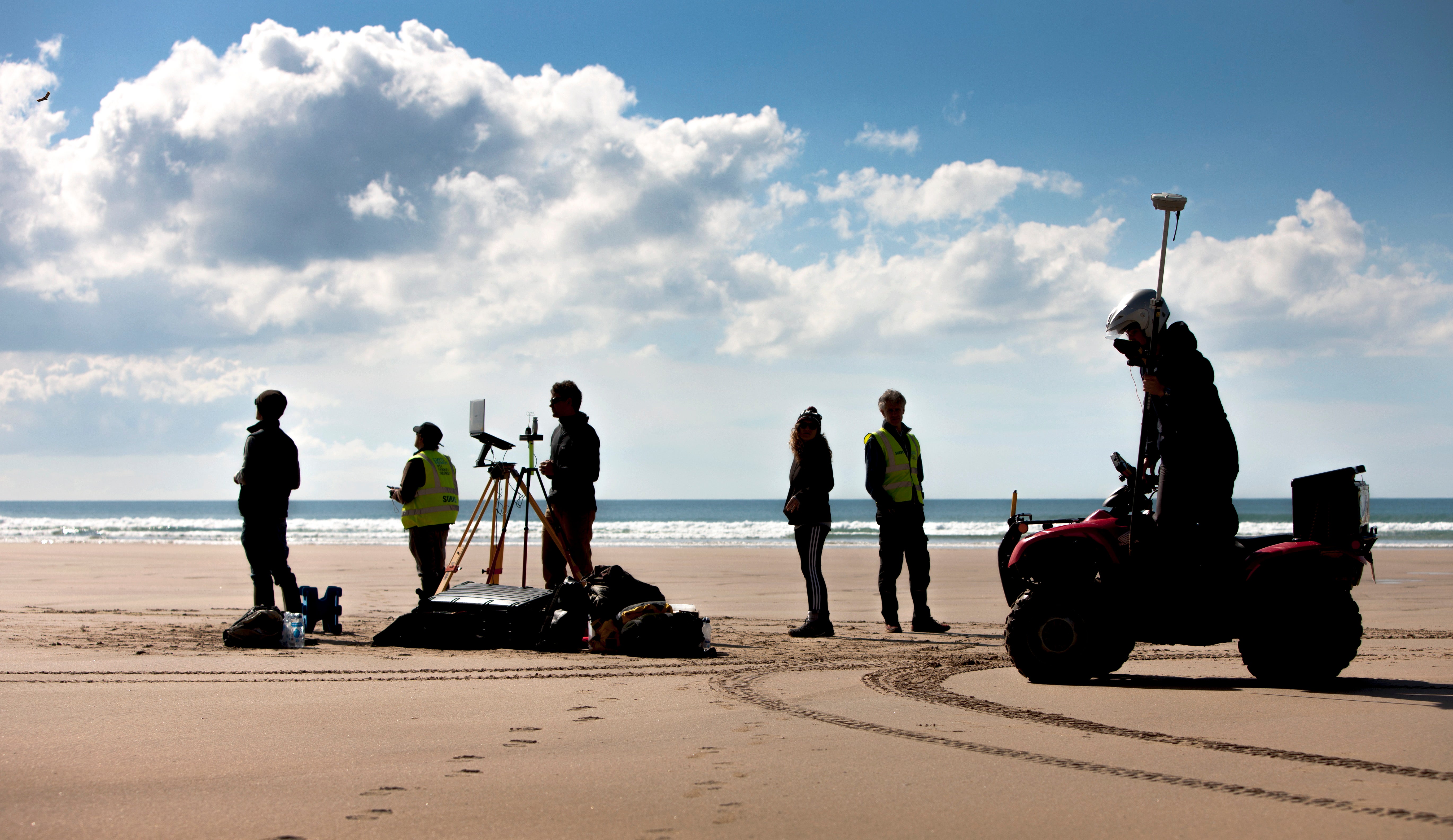Extreme storms ‘could help mend eroding shorelines’
The volume of sand deposited by powerful waves can match that used by engineers trying to slow down coastal retreat, scientists found.

Your support helps us to tell the story
From reproductive rights to climate change to Big Tech, The Independent is on the ground when the story is developing. Whether it's investigating the financials of Elon Musk's pro-Trump PAC or producing our latest documentary, 'The A Word', which shines a light on the American women fighting for reproductive rights, we know how important it is to parse out the facts from the messaging.
At such a critical moment in US history, we need reporters on the ground. Your donation allows us to keep sending journalists to speak to both sides of the story.
The Independent is trusted by Americans across the entire political spectrum. And unlike many other quality news outlets, we choose not to lock Americans out of our reporting and analysis with paywalls. We believe quality journalism should be available to everyone, paid for by those who can afford it.
Your support makes all the difference.Extreme weather events could help offset erosion to beaches caused by rising sea levels by depositing large volumes of new sand along retreating shorelines, according to a new study.
Major storms can pull up vast quantities of sediment from deeper waters and replenish damaged beaches, researchers found.
Large waves can drag sand from beaches and deposit it along the surrounding coastline.
We do now understand that extreme waves can potentially contribute positively to the overall sand budget, despite causing upper beach and dune erosion
Research was led by the University of New South Wales (UNSW) in Australia, in collaboration with academics from the University of Plymouth, and the Autonomous University of Baja California.
Climate change is projected to cause a global sea level rise of between 63cm (25in) and 101cm (40in) by 2100, based on a scenario where future greenhouse gas emissions are at the high end of current modelling.
Global warming is also expected to increase wave heights during extreme weather events along almost three-fifths of the world’s coastlines by the end of the century.
But the researchers said the findings could potentially change long-term predictions about the future of our coastlines.
They found that quantities of sand deposited naturally along the coastlines in the study match the amounts required by engineers for artificial “beach nourishment” projects used to combat erosion.
The study looked at coastlines in Australia, the UK and Mexico, which had each been subject to a period of extreme storms followed by a period of milder weather and beach recovery.
In Australia, scientists focused on Narrabeen Beach in Sydney following an major storm in 2016, which was powerful enough to rip a swimming pool away from a coastal property.
Measurements of the beach and seabed showed that, in theory, the sediment gain from heavy weather was enough to offset decades of projected shoreline retreat.
In the UK, researchers collected monthly data from Perranporth Beach on the north Cornwall coast since 2006, as well as an annual survey of water depth.
Perranporth was hit by extreme weather over the winters of 2013-2014 and 2015-2016, resulting in significant loss of sand from the beach and surrounding dunes.
But by 2018 the beach had gained 420,000 cubic metres (549,339 cubic yards) of sediment.
The researchers said that, while the dataset was limited, it could reshape predictions about our coastlines.
But they warned that, because there are few measurements of the seabed in coastal waters, it is difficult to tell how much sand could be deposited along the shore in future.
Dr Mitchell Harley, of UNSW’s Water Research Laboratory, said: “What we found was that hundreds of thousands of cubic metres of sand was entering these beach systems during these events – that’s similar to the scale of what engineers use to nourish a beach artificially.
It’s a new way of looking at extreme storms
“This could potentially be enough to offset some of the impacts of sea level rises caused by climate change, such as retreating coastlines, and by several decades in the long term. It’s a new way of looking at extreme storms.”
Professor Gerd Masselink, who leads the Coastal Processes Research Group at the University of Plymouth, said: “Looking at the extra sand gained by the beach at Perranporth, we are not quite sure whether this has come from offshore or from around the corner, or even both.
“However, we do now understand that extreme waves can potentially contribute positively to the overall sand budget, despite causing upper beach and dune erosion.
“We have previously shown that coral reef islands could naturally adapt to survive the impact of rising sea levels, and this study shows the changes to our own coastlines could mean the impact of extreme storms are not wholly negative.”
– The paper, Single Extreme Storm Sequence Can Offset Decades Of Shoreline Retreat Projected From Sea-Level Rise, is published in the journal Nature Communications Earth And Environment.